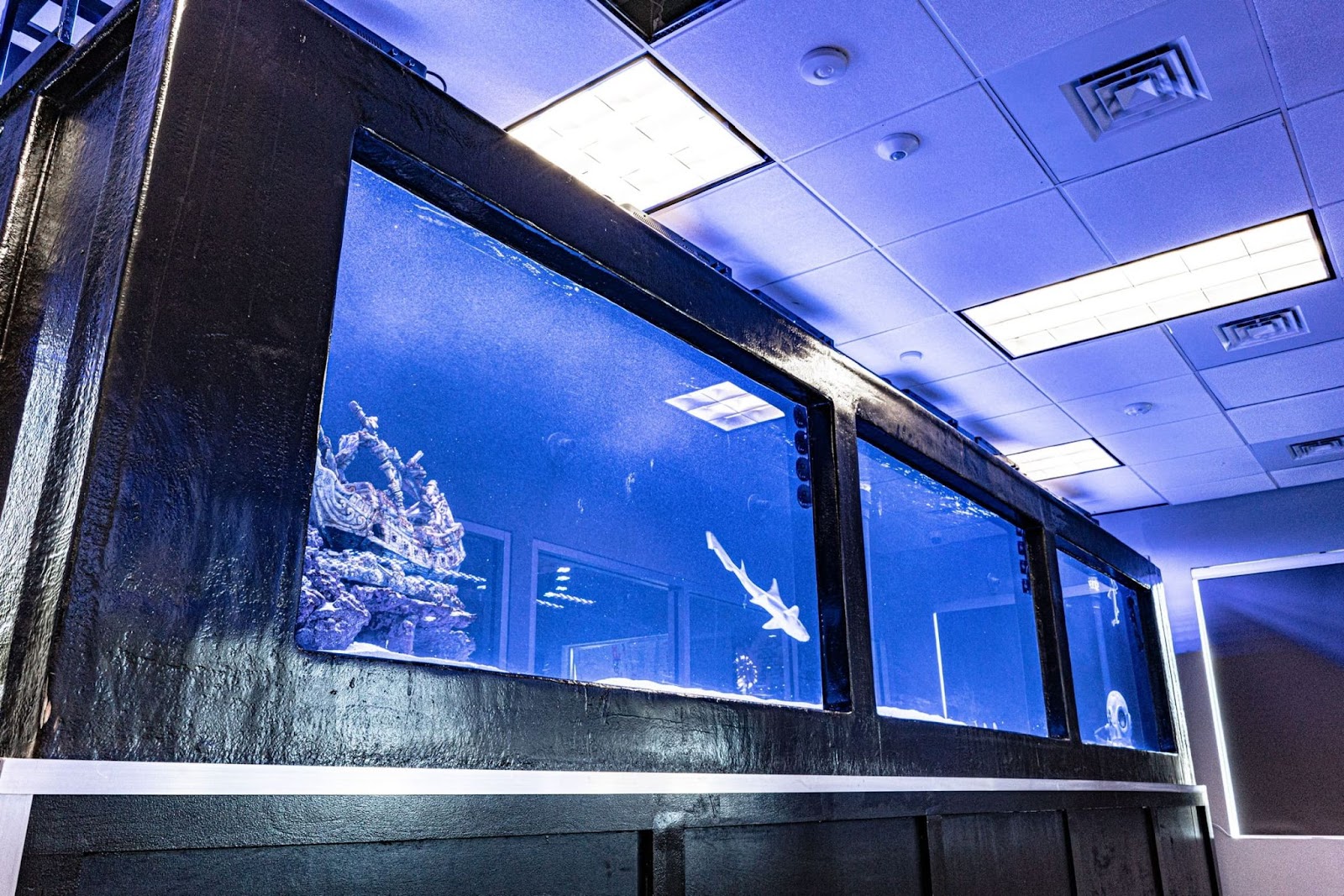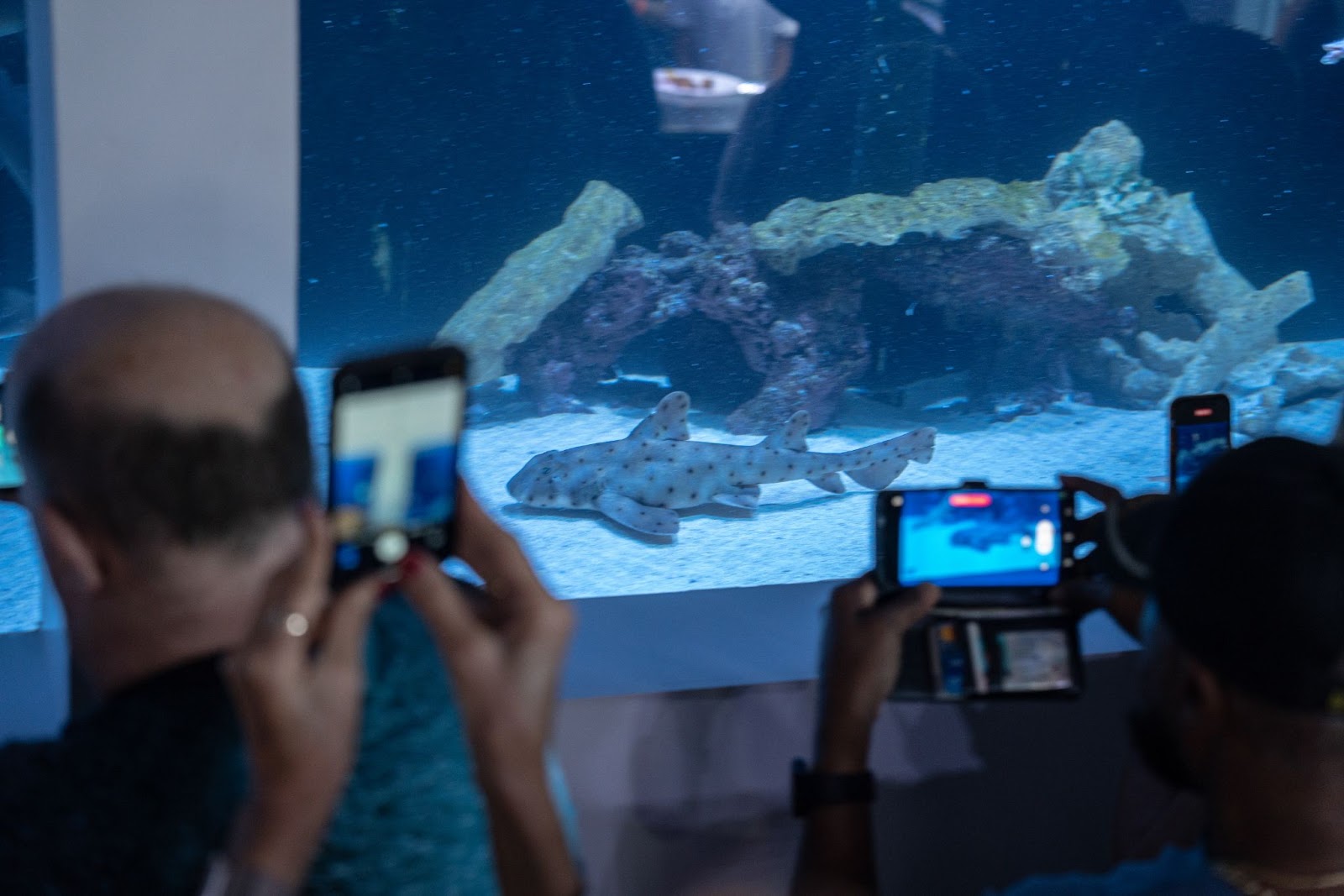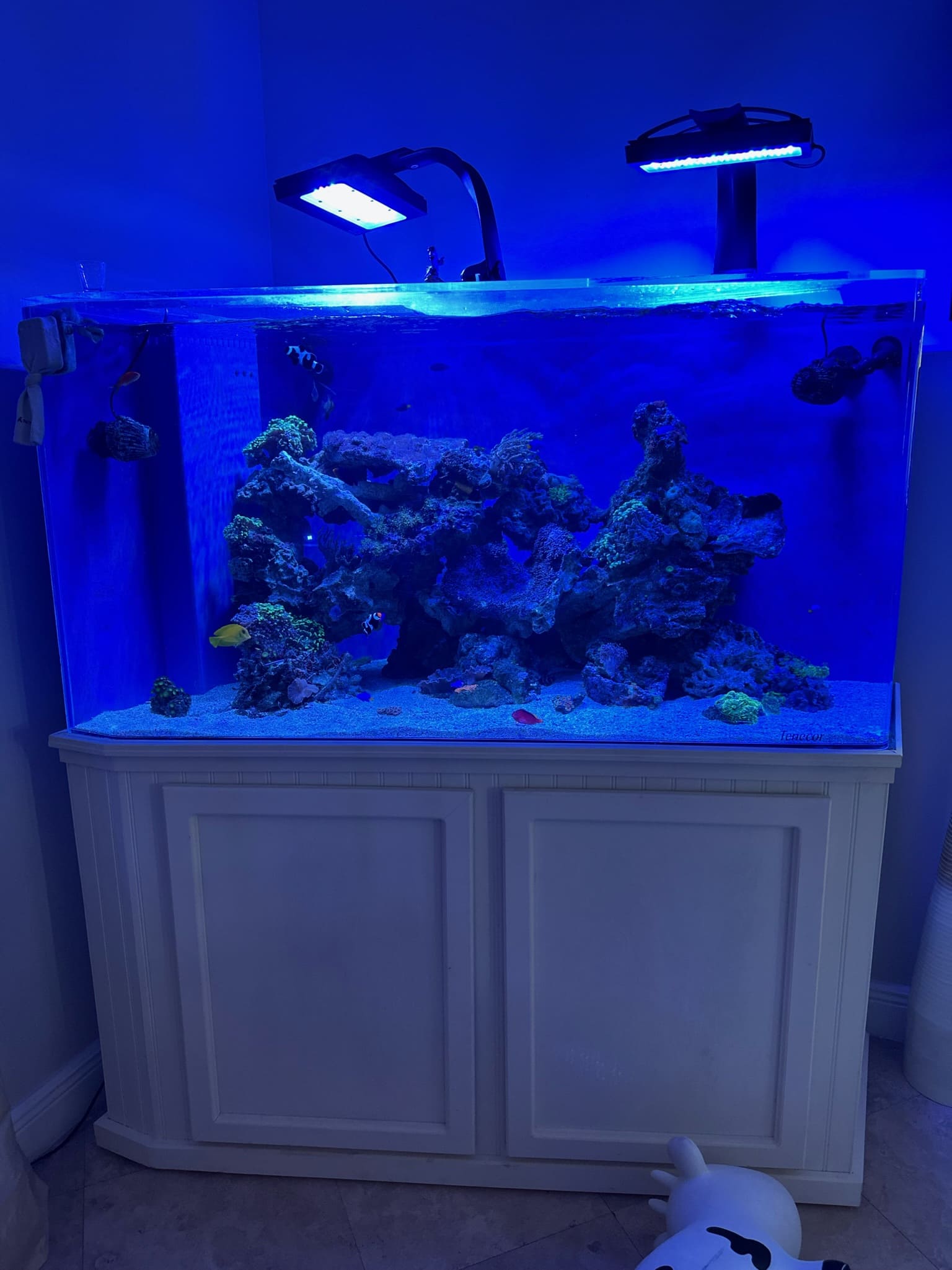Proper aquarium lighting creates a healthy and visually stunning aquatic environment. The right balance of light ensures that plants thrive, fish exhibit their natural behaviors, and the entire ecosystem functions smoothly. However, achieving this balance can be challenging, given the different aquatic species’ varying needs and the complexity of lighting technologies.
In this blog post, we’ll explore how to select, manage, and maintain aquarium lighting to achieve the perfect balance, ensuring the well-being of your tank’s inhabitants and enhancing its overall appearance.
The Role of Light in Aquatic Environments
Light is essential for life in any ecosystem, and aquariums are no exception. In the wild, aquatic plants rely on sunlight for photosynthesis, producing the oxygen necessary for fish and other organisms. Similarly, fish and invertebrates are accustomed to natural light cycles, influencing their feeding, breeding, and resting behaviors. In an aquarium, replicating these natural light conditions helps maintain the health and balance of the ecosystem.
Types of Aquarium Lighting
Choosing the right type of lighting is crucial for meeting the needs of your aquarium’s inhabitants. Here are the most common types:
- LED Lighting: LED lights are energy-efficient, long-lasting, and highly customizable. They can produce various colors and intensities, making them ideal for freshwater and saltwater tanks. LED systems often include programmable features that allow you to simulate natural light cycles, enhancing the well-being of your tank’s inhabitants.
- Fluorescent Lighting: Fluorescent lights are popular due to their affordability and effectiveness. They produce a bright, white light suitable for most freshwater tanks, particularly those with plants. However, their light penetration may be limited in deeper tanks, and they typically require regular bulb replacements.
- Incandescent Lighting: While less common today, incandescent lights are still used in some aquariums. They produce a warm, yellow light that can enhance the appearance of certain fish species. However, they are less energy-efficient and generate more heat, which can affect water temperature.
Selecting the right lighting type depends on your specific aquarium setup, including the types of plants and animals you keep, the size and depth of your tank, and your budget.
Factors to Consider When Choosing Aquarium Lighting

1. Tank Inhabitants
The lighting needs of your aquarium inhabitants are paramount. Different species of fish, plants, and corals have varying requirements:
- Freshwater Plants: Most freshwater plants thrive under moderate lighting, typically in the 6,500-7,500 Kelvin range, miming natural daylight. If you have a heavily planted tank, you’ll need lighting that supports photosynthesis, enabling plants to grow and oxygenate the water.
- Saltwater Corals: Corals, particularly those in reef tanks, require intense, full-spectrum lighting to thrive. LED lights that mimic the natural conditions of a coral reef, including the ability to adjust light intensity and color spectrum, are ideal for these environments.
- Fish: While fish depend less on light for survival than plants and corals, proper lighting is still essential for their well-being. Bright lighting can enhance the vibrant colors of tropical fish, while dimmer lighting may be suitable for species accustomed to deeper waters.
2. Aquarium Size and Depth
The size and depth of your aquarium significantly influence how light penetrates and spreads throughout the tank:
- Small Tanks: Light can easily reach the bottom in smaller tanks, so lower-wattage lights are usually sufficient. However, even light distribution is essential to prevent dark spots and ensure all tank areas are adequately illuminated.
- Large or Deep Tanks: Light penetration can be more challenging in larger or deeper tanks. You’ll need more powerful lighting systems to ensure that all areas of the tank receive sufficient light. LED lights with adjustable settings are often the best choice for deep tanks, as they allow you to tailor the lighting to meet the needs of different tank zones.
3. Photoperiod and Light Intensity
Replicating the natural day/night cycle is crucial for maintaining a healthy aquarium:
- Photoperiod: Most aquariums benefit from 8-12 hours of light daily. This duration mimics the natural sunlight cycle and helps regulate the behavior of your tank’s inhabitants. A timer can help maintain a consistent lighting schedule, ensuring that your fish and plants experience regular light cycles promoting their health and well-being.
- Light Intensity: The intensity of the light should match the needs of your plants and animals. High-light plants and corals may require intense lighting, while low-light species do better under dimmer conditions. Balancing light intensity is also crucial to prevent algae overgrowth, which can occur if the light is too strong or left on for too long.

Balancing Aesthetic and Functional Lighting
Lighting plays a key role in creating a visually stunning aquarium. The right lighting can enhance the colors of your fish, make plants look lush, and create an ambiance that enhances the viewing experience:
- Accent Lighting: Accent lights can highlight specific areas of your tank, such as a coral reef or a centerpiece plant. These lights add depth and drama to your aquarium’s appearance, drawing attention to the tank’s most beautiful or exciting parts.
- Color Variation: Experimenting with different color temperatures and lighting angles can bring out the best in your tank’s inhabitants. For example, blue lighting can enhance the radiance of certain fish, while a warmer light might bring out the reds and oranges. Adjusting the color and intensity of your lights can create a dynamic and engaging display that captivates viewers.
Preventing Common Lighting Issues
While proper lighting can make your tank flourish, improper lighting can lead to problems:
- Algae Growth: Excessive light can promote algae growth, particularly in the blue and red spectrums. Algae can quickly take over a tank, competing with plants for nutrients and clouding the water. To prevent this, ensure you’re not overlighting your tank and consider using algae-reducing settings on your LED lights.
- Overexposure: Just as too little light can stunt plant growth, too much light can lead to stress in fish and bleaching in corals. Signs of overexposure include faded colors in fish, bleached or pale-looking corals, and plants that appear wilted or discolored. If you notice these signs, adjust your lighting to a lower intensity or reduce the photoperiod.
Maintenance and Monitoring of Aquarium Lighting
Keeping your lighting system in top condition requires regular maintenance:
- Cleaning: Over time, lights can accumulate dust, algae, and mineral deposits, reducing their effectiveness. Regularly clean the light fixtures and bulbs to maintain optimal performance. Use a soft cloth or a specialized cleaner to avoid scratching the surfaces.
- Replacement: Light bulbs, especially fluorescent and incandescent, lose intensity over time. To ensure consistent lighting, replace them according to the manufacturer’s recommendations. For LED systems, check for any dimming or color shifts, which may indicate the need for maintenance or replacement.
- Light Measurement Tools: Use a PAR (Photosynthetically Active Radiation) meter to measure the light levels in your tank, ensuring that each area receives the appropriate intensity for its inhabitants. This tool is handy for planted and reef tanks, where precise light levels are critical for plant and coral health.
- Behavioral Observation: Pay attention to your fish and plants. It may be time to adjust your lighting if they seem stressed or show unusual behavior, such as hiding, lethargy, or color changes. Fish and plants that are thriving will exhibit vibrant colors, active behavior, and steady growth.
- Adjustments: Your tank’s lighting needs may change over time as it evolves. Be prepared to make adjustments to maintain the perfect balance. Regularly assess your tank’s lighting and be proactive in making changes to ensure a healthy, thriving environment.

See Aquarium Lighting in Action at the Boca Aquarium
Achieving the perfect balance in aquarium lighting is both an art and a science. By understanding the needs of your tank’s inhabitants and the impact of different lighting options, you can create a healthy and visually stunning environment.
Remember to experiment, monitor, and adjust to keep your aquarium thriving. Proper lighting will enhance your tank’s beauty and support its inhabitants’ well-being, leading to a vibrant and dynamic underwater world.
Find the intricacies of aquarium lighting fascinating and want to explore more about marine life. A visit to the Boca Aquarium by Diamonds by Raymond Lee might be just what you need.
At the Boca Aquarium, you can immerse yourself in the beauty of diverse aquatic ecosystems, observing various species of fish, eels, sharks, and more in well-lit, carefully balanced environments.
It’s a wonderful way to see firsthand how lighting and habitat design come together to support the well-being of these incredible creatures.


